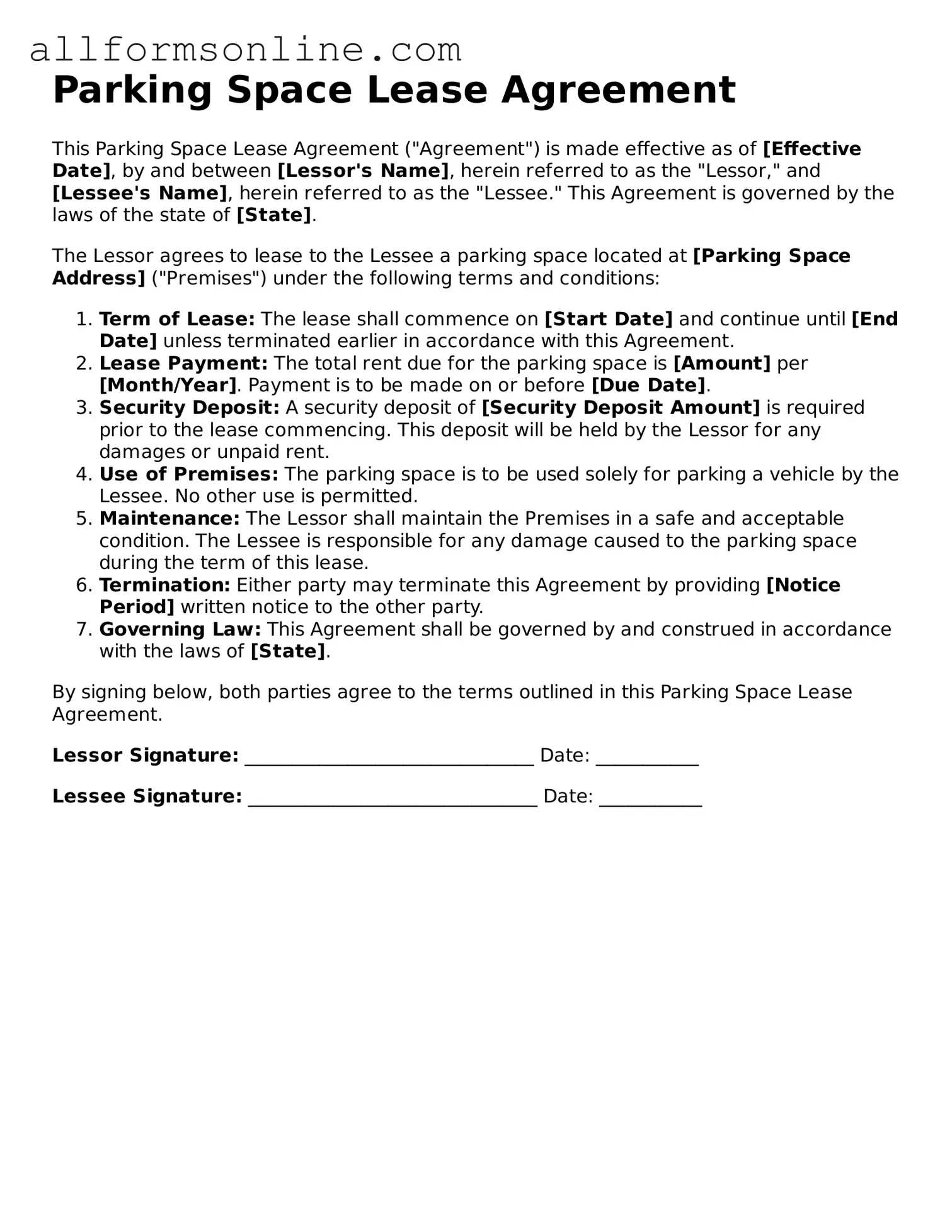What is a Parking Space Lease Agreement?
A Parking Space Lease Agreement is a contract between a property owner and a tenant that outlines the terms for renting a designated parking space. This agreement specifies the duration of the lease, payment terms, and any rules or restrictions related to the use of the parking space.
Who needs a Parking Space Lease Agreement?
Individuals or businesses that require a designated parking space for their vehicles should consider a Parking Space Lease Agreement. This is particularly important in urban areas where parking is limited, or for businesses that need to ensure parking availability for employees or customers.
What information is typically included in the agreement?
Typically, the agreement includes the names of the parties involved, the address of the parking space, lease duration, rental amount, payment schedule, and any specific rules regarding the use of the space. It may also cover liability issues and termination conditions.
How long is the lease term?
The lease term can vary based on the needs of both parties. It can be a short-term agreement lasting a few months or a long-term lease extending for several years. The specific duration should be clearly stated in the agreement.
What are the payment terms?
Payment terms outline how much the tenant will pay for the parking space, when payments are due, and acceptable payment methods. This information helps avoid misunderstandings and ensures that both parties are on the same page regarding financial obligations.
Can the lease be terminated early?
Yes, but the conditions for early termination should be clearly defined in the agreement. This may include notice periods or specific circumstances under which either party can terminate the lease before its end date.
What happens if I damage the parking space or surrounding property?
Liability for damages is usually addressed in the agreement. Typically, the tenant may be responsible for any damages caused to the parking space or adjacent property during the lease period. It's essential to read this section carefully to understand your responsibilities.
Are there any restrictions on the type of vehicle I can park?
Restrictions may vary depending on the agreement. Some leases may specify the type of vehicles allowed, such as passenger cars only, while others might prohibit oversized vehicles or commercial trucks. Always check the agreement for any such limitations.
What should I do if I have a dispute with the landlord?
If a dispute arises, the first step is to communicate directly with the landlord to try and resolve the issue amicably. If that fails, the agreement may outline a process for mediation or arbitration. Legal action is usually a last resort and should be approached with caution.
